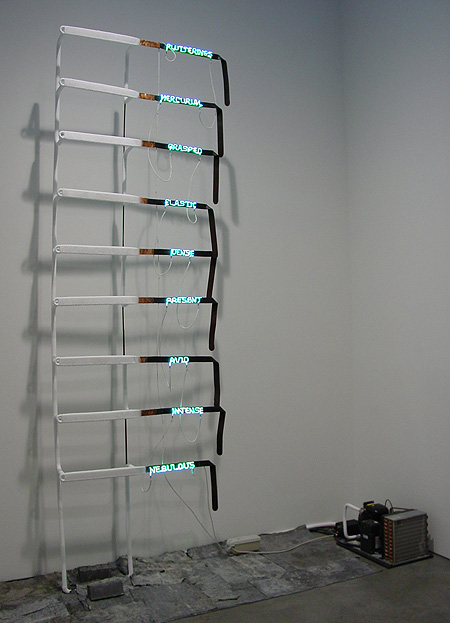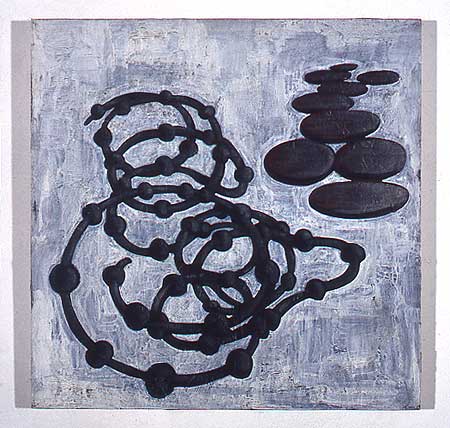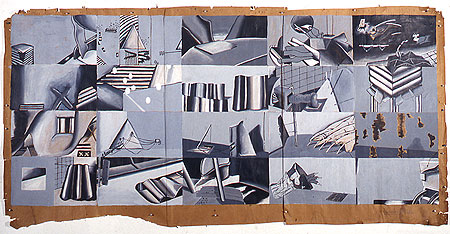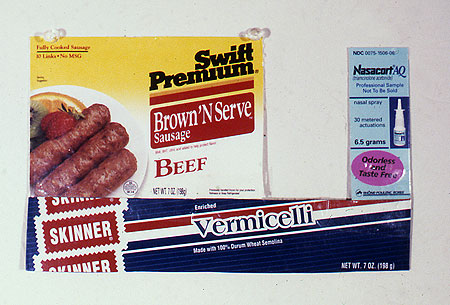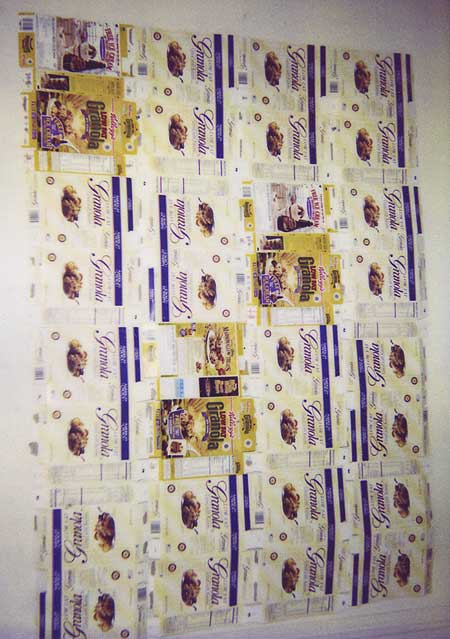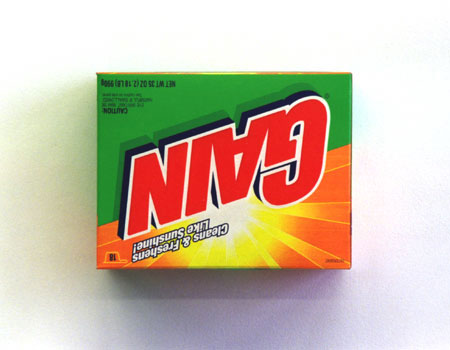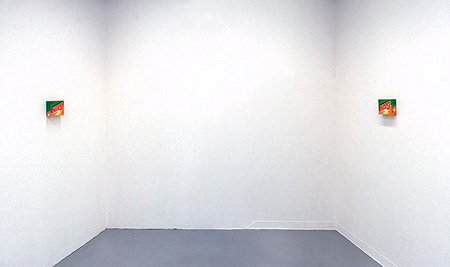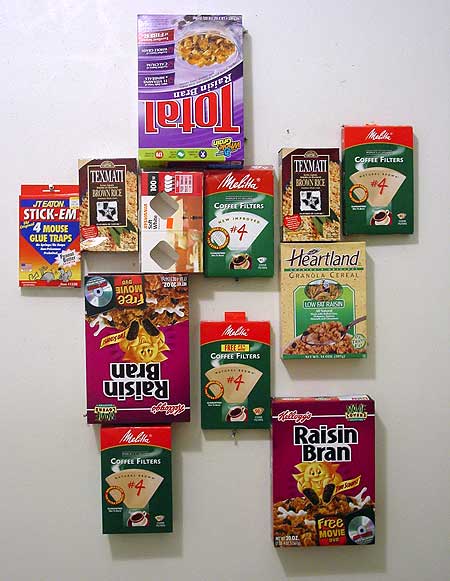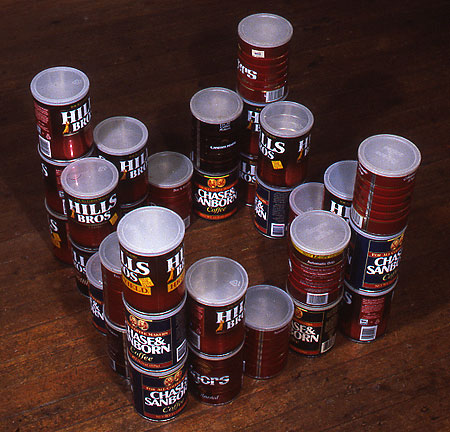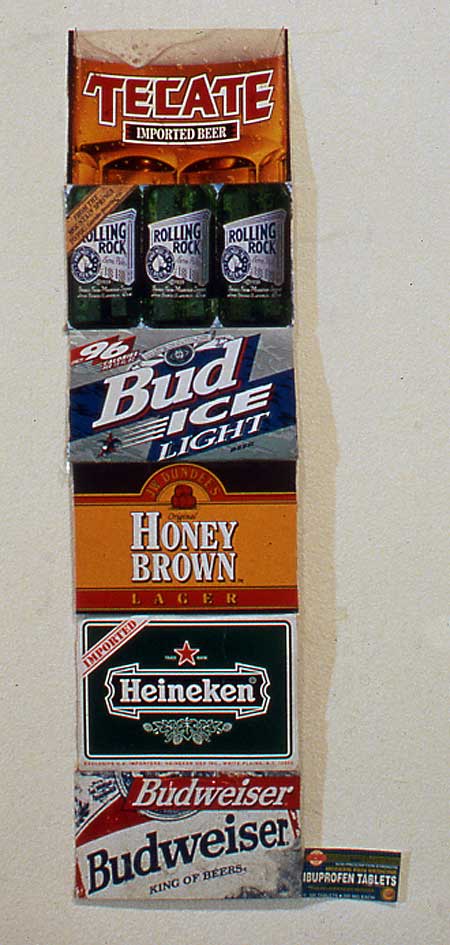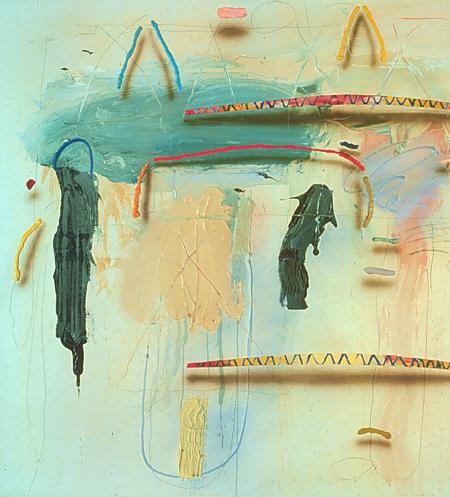
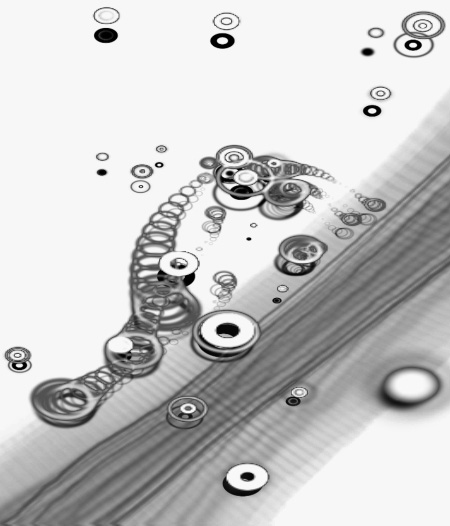
Top: James Havard, Flat Head River, 1976, acrylic on canvas, detail
Bottom: Desaxismundi, detail of untitled work, 2008
The abstract illusionist movement was a one-off trend from the late '70s and is generally considered to be kitsch. Essentially it consisted of painting airbrushed shadows into Cy Twombly-esque gesture paintings; James Havard was the star of the "movement" but he has since completely changed his style of working.
Many painters I know confess a secret admiration for these works.
The "generative art" movement, where computer code defines the parameters of an image that snaps into existence more or less instantly, is growing on me. Partly because it is "something new under the sun" where conventional painters are trapped by their medium and recycling old tricks. Partly because it is getting better--in terms of the image-makers building error and accident into their process.
The black and white image by Desaxismundi is undeniably seductive--you have the circles casting Havard-like shadows, which might be too precious by themselves, but also these shimmery bands of visual noise breaking the white emptiness of the "background." A nice tension results between platonic forms and eruptions of dissonance. It's very musical.


